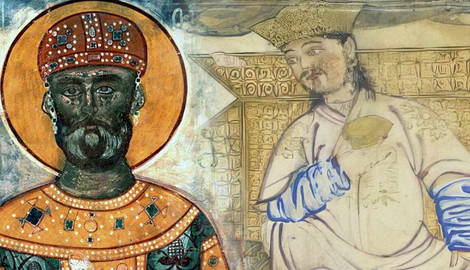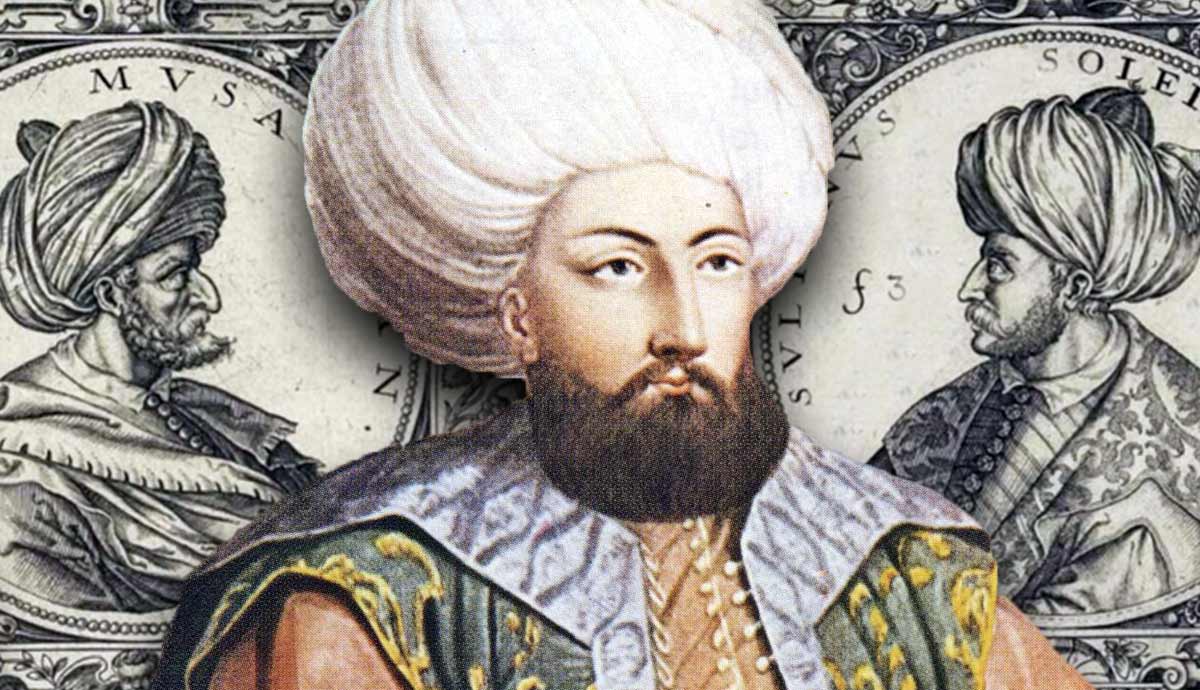
Decades of conflict between the Kingdom of Georgia and the Seljuk Turks culminated in a decisive battle fought in 1121 CE in the Didgori mountain ranges, 40 km west of Tbilisi, the capital of Georgia. King David IV (reigned 1089-1125) longed to put an end to the Seljuk raids and Arab rule of Georgian territories. As an effective military tactician and ruler, he was able to inflict a crushing defeat on a coalition of Muslim armies.
Georgia in the 12th Century

Georgia, situated in the South Caucasus, was an important route between Europe and Asia in the 12th century. To the north, it was surrounded by the Kipchak Khaganate, a Turkic nomadic confederation that often acted as mercenaries for Christian states. To the east were the Turkish principalities of Mengücek, Ahlatshah, and Artuk. Finally, to the south was the Seljuk Empire, formed a century earlier by semi-nomadic Turks.
In earlier centuries, Georgia was ruled by separate feudal states and kingships. One of the most prominent of these was the Bagrationi dynasty, to which the famous Queen Tamar belonged. By the 11th century, the Bagrationi had annexed the Duchy of Kartli and the Kingdom of Abkhazia and founded a unified Kingdom of Georgia, with Bagrat III as their ruler.
In its early years, the Kingdom faced several challenges, both internal and external. The dynastic princes and Aznavour (feudal lords) routinely claimed autonomy and threatened the unity of the nation. Civil war erupted in the 1030s as King Bagrat IV’s reign was challenged by Demetrius, his half-brother and a pretender to the throne. Aristocratic revolts in the 1060s-70s, coupled with raids by nomadic Turks, further put the stability of the kingdom at risk.
When David “the builder” IV ascended to the throne in 1089, the Kingdom of Georgia was in shambles. Not only was it a vassal of the Seljuk state, but it also had volatile relations with its Byzantine neighbors. The country was also suffering socio-economically. Population displacements caused by Seljuk invasions, corruption in the Orthodox Church after the Great Schism, and a state of constant warfare had taken their toll on the country.
The Arrival of the Seljuk Turks

In the 11th century, a small semi-nomadic clan called the Seljuks took Asia by storm. They were named after their eponymous ancestor Seljuk, a 10th-century chieftain who had led his tribal followers out of the Kazakh Steppes and into the Central Asian heartland. Under Seljuk’s grandson Tughril, the Seljuk Empire was formed. Tughril conquered the Persian provinces of Ray and Hamadan, fashioning himself in the style of a Persio-Islamic, rather than nomadic, ruler.
However, the Seljuks’ followers were still Oghuz Turks, semi-nomadic pastoralist people raised with a warrior ethic. For the Oghuz, raids, plundering, and warfare were important pastimes. To stop his nomadic followers from sacking Muslim cities and towns, Seljuk Sultan Alp Arslan (died 1073) led raids into nearby Christian territories such as Georgia. These Seljuk aggressions, coupled with their raids against other Christian powers, eventually led to the declaration of the First Crusade.
Although the Seljuks did not intend to settle in Georgia, their routine raids led to the destabilization and depopulation of many villages. Turkic nomads looking to graze their herds took advantage of this, with some eventually settling in the territory. This influx of Turkish raiders continued well into the reign of George II (1072-1089), who was forced to pay an annual tribute to the Seljuks. This was one reason for the forced abdication of George in 1089. In his place, his son David IV took the throne.
The Road to War

King David immediately set about curbing the Turkish invasions into Georgia. To do this, he instituted military reforms. The Georgian army, composed of mercenaries, peasants, and nobles, had become weakened by decades of dynastic and civil conflict. David ordered offensive, rather than simply defensive, battle approaches to recapture Georgian settlements from the Seljuks.
The strengthening of the Georgian armed forces led to an eventual peace treaty between the Georgians and Seljuks, although this did not stop the nomads’ raids. Gradually, David recaptured larger towns such as Samshvilde. The Seljuks tried to regain these territories in the Battle of Trialeti (1110), but they suffered a crushing defeat at the hands of David’s forces. In 1118, Seljuk garrisons were once again massacred by Georgian forces at the Battle of Rakhsi.
By this time, both the Georgians and Seljuks were devastated by decades of warfare. For the time being, any further escalation of the Georgian-Seljuk conflict seemed unlikely. However, the Seljuks were increasingly worried about David’s settlement of Kipchaks, a rival nomadic Turkic people, in Georgia and the integration of their clans into the army. The tensions brewing under the surface finally erupted in 1121 when Seljuk Sultan Mahmud (died 1131) declared a holy war against Georgia.
Armies and Alliances

Mahmud was joined in his quest by several powerful Islamic states, including Ilghazi, ruler of the Turkic Artukid dynasty and defeater of Baldwin II, King of Jerusalem. Ilghazi had a reputation as a fierce and unrelenting warrior, which had been proved in his earlier battles against the Crusaders. Along with Ilghazi were his vassals, such as the lord of Bitlis and Atabegs (Turkic governors).
The Muslim coalition advanced through several routes: Erzurum and Kars in Eastern Anatolia, Ganja (present-day Azerbaijan), and Armenia. Although the armies were advancing separately, they were large and highly prepared. According to some sources, the Muslim coalition numbered anywhere from 400,000 to 600,000 men. However, it is more likely that there were 100,000 to 200,000 soldiers.
Like the Muslims, the Georgian army also formed alliances, arguably more diverse than their foes. David IV’s army was significantly smaller than the Muslim coalition. Modern estimates round the number to around 60,000 men. In addition to the Georgian royal guard and standing army, Armenians, Franks, and Kipchaks were also used in infantry and cavalry positions.
David had forged an effective army during his earlier military reforms. His monaspa, the core of the Georgian army, was a small yet effective force of 5,000 mounted warriors. The cavalry consisted of Kipchaks who had been raised in the art of steppe warfare, an important element of which were the horse archers. The crusader forces who had in the recent past struggled against the Seljuks and Ilghazi were once again armed with bows and lances, ready to defend the lands of Christendom.
The Battle

When Ilghazi’s forces entered Georgia in July 1121, they were exhausted by a long march through the Caucasus. Though they intended to reach Tbilisi, a city under the control of Muslim Arabs, the army encamped in the valley of Trialeti, near Didgori.
Allowing the Seljuks to unite with the Muslims in Tbilisi would have been catastrophic for David. To prevent this unification, David led his army through the Nichbisi Valley and into a mountainous area. Intending to entrap the Muslim coalition, he split his forces into two. One group was led personally by David, and the other, on standby, by his son Demetrius I.
On August 12th, 200 Kipchak cavalrymen feigned a defection to the Muslim camp. Once inside, they slaughtered the Muslim troops who had welcomed them. Taking this as a sign, David attacked Ilghazi’s forces with his crusader knights. The left wing of his army, under Demetrius, went on to thrash Seljuk cavalrymen.
In the fighting, Ilghazi and other commanders were injured and withdrew from battle, demoralizing the already weakened Muslim forces. Left leaderless and disorganized, Seljuk troops began to retreat, followed by a mass retreat of their coalition forces. In the ensuing chaos, King David led the right flank right into enemy territory. The Seljuks were now being pursued from all sides of the mountain.
The Georgian Advantage

Not only were David’s forces more familiar with the Georgian terrain, but they were also aided by it. The battlefield was situated in the Didgori Mountain ranges, known for its dense wooded areas, slopes, valleys and lush meadows.
After the initial Georgian attacks, the Muslim coalition became further divided and disoriented by the hilly terrain. Some of the Seljuk forces were stuck in narrow passes, while others retreated down the slopes. This allowed the Georgian cavalry to pursue and attack the fleeing Seljuks with ease.
According to Armenian historian Matthew of Edessa’s Chronicles, the Seljuks were slaughtered in their thousands, their blood and bodies covering the hills of Didgori. In the days following the battle, Georgian cavalrymen roamed the mountains to ensure that the remainder of the Muslim troops were either killed or taken captive.
Georgian Victory and Seljuk Losses

The crushing defeat of the Muslim coalition forces had an immense impact on the Seljuk Empire. Seljuk losses not only occurred in the form of dead soldiers. Many troops were taken captive by the Georgians to be used as ransom in diplomatic scuffles with Seljuk authorities. Although Ilghazi made it out alive, he suffered the shame of a defeat that had left a huge dent in his army.
For the Georgians, however, Didgori came to symbolize a reconquest of their country and the victory of Christendom against the Islamic world. David’s reputation as a “rebuilder” of the Georgian Kingdom became cemented as he went on to besiege and reconquer Tbilisi from the Arabs who had controlled it since 736 CE.
Following the reconquest, Tbilisi became the capital of the Kingdom. Soon after, the Georgian Golden Age began, a period of cultural, economic, and political advancement. David’s increasing power and strength allowed him to secure much of the Georgian border against Turkish incursions and to conduct his military campaigns in the Caucasus.
For centuries to come, the Battle of Didgori remained an important triumph in the Georgian national psyche. In the 1990s, the former battlefield in the Didgori mountains was decorated with monuments of swords as a reminder of the events that occurred eight centuries earlier.







